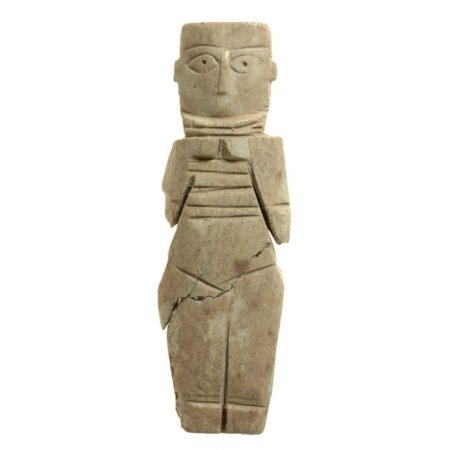Ancient Wooden ‘Coptic Dolls’ May Have Been The Ancestors Of Today’s Barbie Dolls
Conny Waters - AncientPages.com - For as long as anyone can remember, children loved to play with various toys, but kids living a long time ago did not have parents who could walk into a shop and buy something entertaining. Yet, there is archaeological evidence our ancestors did take the time to carve and build things their children could play with. Sometimes, archaeologists uncover ancient artifacts that may have been used for a number of purposes.
Ancient figurines made in the image of humans were often used during ritual ceremonies or as burial gifts, but could some of these human-like figures have been toys, too?
Dolls from excavations in Ramla: (1) Miniature articulated doll; (2) Cloth doll head; (3) Flat articulated doll; (4) Flat articulated schematic doll; (5) Unarticulated schematic doll; (1-5) scale 1:1; (1) Color image courtesy of the Museum of Ramla. © Israel Antiquities Authority
The Term Coptic Dolls
"These bone figurines were first recognized as a homogenous artifact group by Joseph Strzygowski in 1904, although earlier mentions exist. In his volume “Koptische Kunst”, he described 13 “puppen” from the Cairo Museum and was the irst to suggest they were toys rather than cult figurines.
Not all researchers agree. Strzygowski concluded a pre-Islamic origin and dated the dolls between the 4th and 12th centuries. A fragment with a religious Christian Greek inscription, supporting his pre-Islamic origin thesis, was in a group of figurines which he had purchased in Cairo in 1900-1901 for the Kaiser Friederich Museum. Some of these were published later by Sir Leonard
Woolley (1907) and Oskar Wulf (1909).
Although Strzygowski never actually used the term “Coptic dolls,” it was already attached to them by Woolley, and continues to be used even today. This is probably because Strzygowski, and Gayet before him, published them in volumes titled “Coptic Art.” 1
In the Early Islamic period (7th to 11th centuries CE), a unique type of figurine with human-like characteristics, made of bone, began to appear. Ariel Shatil, an Israel Antiquities Authority archaeologist specializing in dolls and figurines, sheds light on these intriguing artifacts.
"Some researchers speculate that these figurines served as toy dolls, while others suggest they might have been fertility figurines. What is particularly fascinating is that no two dolls were identical; each possessed distinct features, even if they shared the same concept. These dolls appeared in the Early Islamic period, over a period of about two or three centuries, after which they mysteriously disappeared from the scene," Shatil explains.
Shatil continues, “Moreover, distinct regional styles emerged. For instance, in the northern part of the country, the figurines had more schematic features, and they were crafted from flat bones such as animal ribs and adorned with dots and circles.
By contrast, in the southern part of the country and in the desert, the figurines were more human-like and realistic. Most of the figurines are depicted naked, without clothes, but there is a group of figurines wearing garments. The exact purpose of the figurines—whether fertility symbols to encourage procreation or simply toys—remains a subject of debate.”
The picture shows a figurine with schematic features, reflecting Egyptian characteristics, dating to the Abbasid period, uncovered in the excavations carried out next to the Western Wall precinct in Jerusalem. Credit: Israel Antiquities Authority
Originally crafted in the region of Iran and Iraq, one wonders how these figurines found their way to this area. Following the Muslim conquest of the country, artisans were brought in to construct and decorate palaces. Alongside the monumental art displayed in these palaces, these same artisans introduced or crafted these figurines, producing them in considerable quantities as they gained popularity within all social classes.
See also: More Archaeology News
“Although predominantly made of bone, there are also ivory figurines, possibly belonging to wealthier families,” Ariel observes. “But, by the end of the eleventh century, these figurines disappeared from the scene, probably due to restrictions imposed in accordance with Islamic law.”
Written by Conny Waters - AncientPages.com Staff Writer
Expand for references- Ariel Shatil - Bone figurines of the early Islamic period: the so called "Coptic dolls" from Palestine and Egypt, Institute of Archaeology, Belgrade
More From Ancient Pages
-
 Immigrants In Prehispanic Cancun Were Treated Just Like Maya Locals
Archaeology | Oct 26, 2023
Immigrants In Prehispanic Cancun Were Treated Just Like Maya Locals
Archaeology | Oct 26, 2023 -
 Vikings: Facts And History About The Tough Norse Seafaring People
Ancient History Facts | Mar 13, 2017
Vikings: Facts And History About The Tough Norse Seafaring People
Ancient History Facts | Mar 13, 2017 -
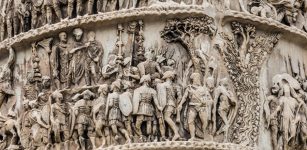 Impressive Column Of Emperor Marcus Aurelius – War Monument From Ancient Rome
Featured Stories | Jul 6, 2017
Impressive Column Of Emperor Marcus Aurelius – War Monument From Ancient Rome
Featured Stories | Jul 6, 2017 -
 Home Of The Gods – Arrival Of Golden Ships – Part 1
Ancient Mysteries | Jun 12, 2018
Home Of The Gods – Arrival Of Golden Ships – Part 1
Ancient Mysteries | Jun 12, 2018 -
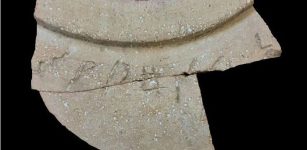 Puzzling Sabaean Inscription Found On A Large Clay Jar Near The Jerusalem Temple Deciphered
Archaeology | Apr 4, 2023
Puzzling Sabaean Inscription Found On A Large Clay Jar Near The Jerusalem Temple Deciphered
Archaeology | Apr 4, 2023 -
 Connection Between Viruses And Ancestors Of All Complex Life Has Been Found
Archaeology | Jul 1, 2022
Connection Between Viruses And Ancestors Of All Complex Life Has Been Found
Archaeology | Jul 1, 2022 -
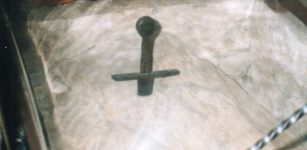 Mystery Of The Real Sword: How Did A Meter Long Sword End Up In Solid Rock?
Artifacts | Apr 15, 2019
Mystery Of The Real Sword: How Did A Meter Long Sword End Up In Solid Rock?
Artifacts | Apr 15, 2019 -
 Ancient Trade Routes Between Iran And Mesopotamia – Uncovered
Archaeology | Dec 4, 2015
Ancient Trade Routes Between Iran And Mesopotamia – Uncovered
Archaeology | Dec 4, 2015 -
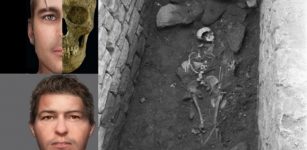 Mystery Of An Edinburgh Crypt – Secrets Of Warriors Of Dark Ages In Scotland – Revealed
Archaeology | Oct 3, 2015
Mystery Of An Edinburgh Crypt – Secrets Of Warriors Of Dark Ages In Scotland – Revealed
Archaeology | Oct 3, 2015 -
 Unraveling The Mystery Of How Our Ancestors Created The First Spoken Words
Archaeology | Dec 6, 2021
Unraveling The Mystery Of How Our Ancestors Created The First Spoken Words
Archaeology | Dec 6, 2021 -
 Unique Archaeological Finds Point To The Lost Indigenous Town Of Sarabay In Florida
Archaeology | Jun 20, 2022
Unique Archaeological Finds Point To The Lost Indigenous Town Of Sarabay In Florida
Archaeology | Jun 20, 2022 -
 What Does DNA From 1,700-Year-Old Individuals Dated To The Three Kingdoms Period Tell About Ancient And Modern Korea?
Archaeology | Jun 21, 2022
What Does DNA From 1,700-Year-Old Individuals Dated To The Three Kingdoms Period Tell About Ancient And Modern Korea?
Archaeology | Jun 21, 2022 -
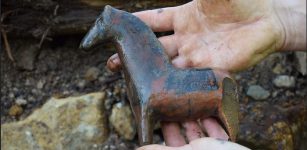 World’s Oldest Dala Horse Discovered In Sweden
Archaeology | Jul 18, 2020
World’s Oldest Dala Horse Discovered In Sweden
Archaeology | Jul 18, 2020 -
 Scientists Suggest Neanderthals And Modern Humans Should Be Classified As Separate Species
Evolution | Dec 6, 2024
Scientists Suggest Neanderthals And Modern Humans Should Be Classified As Separate Species
Evolution | Dec 6, 2024 -
 Drinking Horn: Important Yule Symbol And Its Connection To Biblical Magi And Christmas
Christmas Traditions | Dec 25, 2024
Drinking Horn: Important Yule Symbol And Its Connection To Biblical Magi And Christmas
Christmas Traditions | Dec 25, 2024 -
 On This Day In History: Father Of Nation Mahatma Gandhi Was Born – On Oct 2, 1869
News | Oct 2, 2016
On This Day In History: Father Of Nation Mahatma Gandhi Was Born – On Oct 2, 1869
News | Oct 2, 2016 -
 People Who Carry Neanderthal Gene Variants Have Greater Pain Sensitivity
DNA | Oct 11, 2023
People Who Carry Neanderthal Gene Variants Have Greater Pain Sensitivity
DNA | Oct 11, 2023 -
 Olive Trees Were First Domesticated 7,000 Years Ago In The Jordan Valley
Archaeology | Jun 17, 2022
Olive Trees Were First Domesticated 7,000 Years Ago In The Jordan Valley
Archaeology | Jun 17, 2022 -
 Comet Strike 13,000 Years Ago May Have Changed Human Civilization
Archaeology | Jul 6, 2021
Comet Strike 13,000 Years Ago May Have Changed Human Civilization
Archaeology | Jul 6, 2021 -
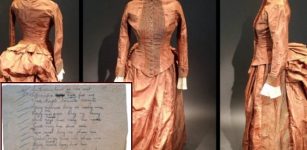 Mysterious Code Hidden In Antique Silk Dress Bought In Maine Finally Deciphered!
Artifacts | Jan 23, 2024
Mysterious Code Hidden In Antique Silk Dress Bought In Maine Finally Deciphered!
Artifacts | Jan 23, 2024


